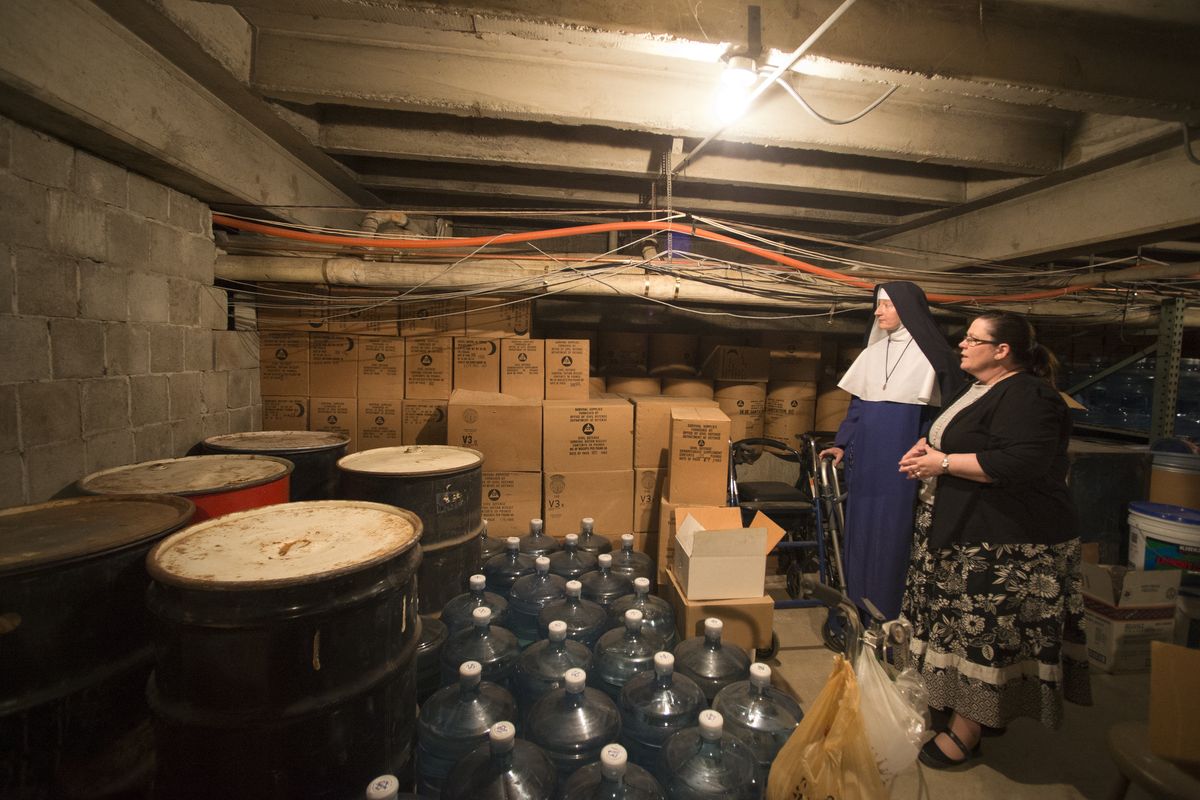This column reflects the opinion of the writer. Learn about the differences between a news story and an opinion column.
Shawn Vestal: There’s no ducking our Cold War preparedness

In August 1945, the United States dropped nuclear bombs on the Japanese cities of Hiroshima and Nagasaki.
Five years later, the superintendent of schools in Spokane stood in front of 900 educators at Lewis and Clark High School and warned: “The same thing that happened to Hiroshima and Nagasaki could happen here, and we must prepare for it.”
For decades, that’s just what a lot of people in Spokane did. If the 1950s and ’60s were sweltering with Cold War paranoia, Spokane had one of the higher fevers. Local government officials urged public action and compiled potential nuclear targets and impacts. Newspapers published maps of potential destruction in the case of a nuclear attack. Citizens were schooled in blackout procedures and practiced a citywide evacuation while planes dropped leaflets that read: “This Could Have Been an ‘H’ Bomb.”
And a lot of people – though it’s impossible to say how many – dug and stocked their own backyard bomb shelters.
Lee O’Connor, the author of a book on Spokane’s history of fallout shelters titled “Take Cover, Spokane,” says that while this was a national passion, “Spokane really distinguished itself in terms of civil defense.”
A graduate of Washington State University with a master’s degree in public history, O’Connor has an interest in Cold War-era relics – and especially of the underground variety. He self-published this book in 2014 with CreateSpace, and is now working on a book on the abandoned missile silos in the Columbia Basin.
“I like to call them ruins of modern civilization,” he said this week.
He first became interested in Spokane’s fallout shelters while he was an undergrad at The Evergreen State College, visiting the state archives. There, he found a map of Tacoma fallout shelters; later he came across one online of Spokane shelters: The city was dotted with them.
O’Connor’s book tells a story of a city and nation shifting uncertainly between untried strategies for a little-understood threat. Having opened the door to the use of nuclear weapons, America became subject to boomeranging fears of devastation with no good idea of what to do about it.
Recall the cartoon character Bert the Turtle, urging kids to duck and cover under their desks in the case of a nuclear attack. Or consider this piece of advice from a survival guide from 1951, urging people to “jump in any handy ditch or gutter” if they can’t get indoors.
And yet the idea of Spokane as a potential target was not, in the context of the times, so far-fetched. It was a population center, a railroad hub and, most importantly, a region of crucial military activity, including the bombers at Fairchild and the nine intercontinental ballistic missiles spread around the region in the 1960s.
The federal government in 1951 named Spokane one of 271 potential nuclear targets in the nation. By that time, civil-defense efforts such as blackouts against air raids were already ingrained in daily life. In the early 1950s, the philosophy of civil defense was built around the idea of large public shelters, according to Lee’s book. A proposal to spend $13 billion on shelters nationwide was raised – and dismissed as too expensive.
The feds and local governments began pitching thriftier ideas. This was the era of “duck and cover” and “jump in any handy ditch” – thrifty, indeed. Photographs from the time show Spokane schoolchildren huddled in hallways, ducking but not covered.
In 1954, city, state and military officials launched the “Operation Walkout” – an evacuation exercise intended to serve as an example to the nation. Tanks and soldiers occupied downtown, military planes flew overhead, mock explosions were detonated, and thousands of Spokane residents fled the downtown area. Between 10,000 and 20,000 people participated, according to estimates at the time, and afterward the city’s civil defense chief said, “Had a bomb actually exploded over Spokane today, the queen city of the Inland Empire would now be a desert of rubble.”
Evacuation lost favor as the government strategy, and by the 1960s officials turned toward private shelters. The government recommended that people build a shelter 2 or 3 feet underground, with heavy layers of earth or concrete to protect people against gamma radiation fallout. People were advised to have two weeks’ worth of food, and hand-cranked systems for pumping in breathable air. Existing spaces like basements and parking garages were also rated for their protective abilities; government documents urged people without fallout shelters to construct “basement hideaways” out of furniture.
Some worried about battles between the haves and have-nots.
“Those with shelters would be stormed by those without them and death would probably ensue from struggles for possession of the shelters as much from fallout,” one concerned citizen told legislators, according to the book. “There would be no law except that of self-survival.”
The government identified 81 public shelters in buildings and businesses around town, and they were stocked with a two-week supply of survival crackers and other items in 1965. The number of backyard shelters was estimated around that time as 300, though no reliable figure is available given that many people built them without permits.
By that point, however, the shelter boom was busting, and the focus returned to evacuation. In 1979, the Spokane County relocation plan called for 245,000 people to flee the city in case of nuclear attack. The plan estimated that, at three people per car, the city could be emptied in eight hours.
